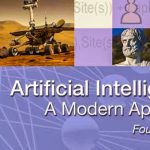The Basics of Deep Learning
Before starting deep dive we must understand the basics of Deep Learning (DL). Following few questions will give you basics ideas of deep learning.
What is Deep Learning?
Deep learning is a subset of machine learning where artificial neural networks, inspired by the structure and function of the human brain, learn to perform tasks by analyzing vast amounts of data. These neural networks consist of multiple layers of interconnected nodes, each layer processing information in increasingly abstract ways.
How Does Deep Learning Work?
Deep learning models learn to recognize patterns and make decisions by adjusting the weights of connections between nodes based on the error in their predictions. Through a process called backpropagation, these models iteratively refine their parameters until they achieve high accuracy on the given task.
Applications of Deep Learning
1. Computer Vision: Deep learning powers image recognition systems, enabling applications like facial recognition, object detection, and autonomous vehicles.
- – Facial recognition systems use deep learning to identify individuals in images or videos, revolutionizing security and authentication processes.
- – Object detection algorithms leverage deep learning to accurately locate and classify objects within images, enhancing tasks like surveillance and inventory management.
2. Natural Language Processing (NLP): Deep learning techniques drive advancements in NLP, enabling machines to understand, interpret, and generate human language.
- – Chatbots and virtual assistants utilize deep learning models to understand and respond to user queries, providing personalized assistance across various domains.
- – Language translation services employ deep learning to accurately translate text between different languages, facilitating global communication and collaboration.
3. Healthcare: Deep learning plays a crucial role in medical image analysis, disease diagnosis, and drug discovery.
- – Medical imaging technologies leverage deep learning algorithms to detect anomalies in scans, aiding radiologists in diagnosing conditions like cancer and cardiovascular diseases.
- – Deep learning models analyze genomic data to identify potential drug targets and predict patient responses to treatments, accelerating drug development processes.—
The Future of Deep Learning
After understanding of the basics of DL now its time to get info about the future of DL. All new technologies will survive if these technologies have their future.
Advancements in Model Architectures
- Transformers: Transformer-based architectures, such as BERT and GPT, have demonstrated remarkable performance in NLP tasks by capturing contextual relationships within text data more effectively.
- Graph Neural Networks (GNNs): GNNs extend deep learning techniques to non-Euclidean domains, enabling the modeling of data with complex relational structures, such as social networks and molecular graphs.
- Neuromorphic Computing: Inspired by the brain’s architecture, neuromorphic computing aims to design hardware that mimics neural networks’ parallelism and efficiency, potentially enabling more energy-efficient and scalable deep learning systems.
Ethical and Societal Implications
- Bias and Fairness: Addressing biases in deep learning models is crucial to ensure equitable outcomes, particularly in applications like hiring, lending, and criminal justice.
- Privacy Concerns: Deep learning models often rely on vast amounts of personal data, raising concerns about privacy infringement and data misuse. Techniques such as federated learning and differential privacy mitigate these risks by preserving data privacy during model training.
- Regulatory Frameworks: Policymakers are exploring regulatory frameworks to govern the development and deployment of deep learning technologies, balancing innovation with accountability and transparency.
Trends in Deep Learning
Trends and Tricks of Deep Learning will cast good impact on its importance. Now a days DL is very trendy and in future DL will be the backbone of AI.
Autonomous Systems
- Autonomous Vehicles: Deep learning enables the development of self-driving cars by processing sensor data to perceive and navigate the environment safely.
- Robotics: Deep learning algorithms power robots to perform complex tasks, such as object manipulation and navigation, in unstructured environments like warehouses and hospitals.
- Industrial Automation: Deep learning enhances efficiency and productivity in manufacturing by optimizing processes, predicting equipment failures, and improving quality control.
Edge Computing
- On-Device AI: Deploying deep learning models directly on edge devices, such as smartphones and IoT devices, reduces latency and bandwidth requirements, enabling real-time inference and offline capabilities.
- Privacy-Preserving AI: Edge computing facilitates privacy-preserving AI applications by processing sensitive data locally, minimizing the need for data transmission to centralized servers.
- Low-Power Consumption: Deep learning frameworks optimized for edge devices prioritize energy efficiency, extending battery life and enabling continuous operation in resource-constrained environments.
Interdisciplinary Collaboration
- AI and Healthcare: Collaboration between AI researchers and healthcare professionals accelerates the development of deep learning solutions for disease diagnosis, personalized treatment planning, and medical research.
- AI and Climate Science: Deep learning techniques aid climate scientists in analyzing large datasets, predicting weather patterns, monitoring environmental changes, and developing strategies for climate mitigation and adaptation.
- AI and Creative Industries: Integrating deep learning with creative disciplines such as art, music, and literature fosters innovation and exploration of new forms of expression, blurring the boundaries between human creativity and AI-generated content.
Integrating Deep Learning into Various Domain
DL will have its future as it integrates with many technolgies and capable to show its importance in every field.
Business and Finance
- Predictive Analytics: Deep learning models forecast market trends, optimize investment strategies, and identify patterns in financial data to support decision-making processes.
- Risk Management: Deep learning algorithms analyze historical data to assess credit risk, detect fraudulent activities, and enhance cybersecurity measures in banking and insurance sectors.
- Customer Engagement: Deep learning powers recommendation systems, personalized marketing campaigns, and sentiment analysis tools to enhance customer satisfaction and retention in e-commerce and retail industries.
Education and Research
- Personalized Learning: Deep learning algorithms adapt educational content and teaching strategies to individual students’ learning styles, preferences, and performance levels.
- Scientific Discovery: Deep learning accelerates scientific research by analyzing experimental data, simulating complex systems, and discovering novel patterns or phenomena in various scientific disciplines.
- Accessibility and Inclusivity: Deep learning technologies support accessibility initiatives in education by providing tools for text-to-speech conversion, image captioning, and language translation, making learning materials more accessible to diverse learners.
Environmental Conservation
- Biodiversity Monitoring: Deep learning models analyze satellite imagery and sensor data to monitor wildlife habitats, track endangered species, and assess ecosystem health for conservation efforts.
- Climate Modeling: Deep learning techniques improve climate models’ accuracy by incorporating complex interactions between atmospheric, oceanic, and terrestrial processes, aiding in climate change mitigation and adaptation strategies.
- Natural Disaster Prediction: Deep learning algorithms predict natural disasters such as hurricanes, earthquakes, and wildfires by analyzing historical data and real-time sensor readings, enabling early warning systems and disaster preparedness initiatives.
By delving into the fundamentals, envisioning future advancements, and exploring integration across diverse domains, it becomes clear that deep learning is not merely a technological tool but a transformative force shaping the way we perceive, interact with, and harness the power of information. As we navigate the complexities and opportunities of this AI-driven era, the journey of deep learning continues to unfold, promising innovation, challenges, and boundless possibilities on the horizon.






